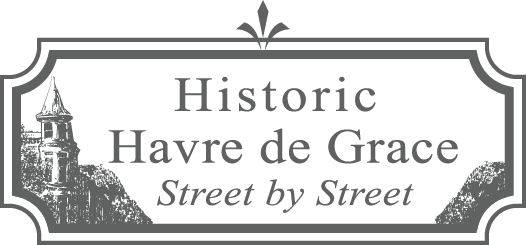Back to All Listings
100 Lafayette Street, Havre de Grace Maritime Museum, c. 1988
Stop #40 on The Lafayette Trail
Although this building does not qualify in itself as historic, it is included here for the long maritime history it represents. The Maritime Museum was incorporated in 1988 by a historically-minded group of local citizens to preserve the great maritime heritage and lifestyle of the upper Chesapeake Bay for future generations. They included Charles E. Carter, John F. Carroll, Eldon duPont Homsey, Robert L. McVey, Andrew A. Thompson, and Josiah V. Thompson. They chose this site because it is at the point where the Susquehanna River meets the Chesapeake Bay.
In 1991 a deck was built and in 1999 a 5,600 square-foot wood structure was erected over the former swamp land after the area was filled in and graded. Brass plates are engraved with names of donors of pilings and other parts of the building. There are many windows overlooking the water area including three made to look like large portholes.
At the foot of Revolution Street there is now a row of townhouses called The Log Pond, which is where there was a retention pond for logs that were transported down the Susquehanna River in the late 1800s. As well as finding 100-year old logs, the Log Pond builders found a sunken ship there with an old propeller sticking out of the water. That propeller is now displayed on the grounds of The Maritime Museum.
On November 14, 2015, The Maritime Museum celebrated the Grand Opening of its Environmental Center and Classroom. Located on the ground floor, it shares some of the now total 10,000 square-foot space with a boat and exhibit building/shop, gallery, classrooms and research/teaching laboratory. The Museum and Environmental Center hosts hundreds of school children in various tours, summer camps, and other programs.
The striking murals on the façade of the Museum facing Lafayette Street were created by internationally-recognized Philadelphia artist, Paul Santoleri in 2017. “Windward Trim” is a painting in three sections, showing ships, nautical instruments, and waterfront creatures. Paul Santoleri aims to convey buoyancy and movement with his art.
